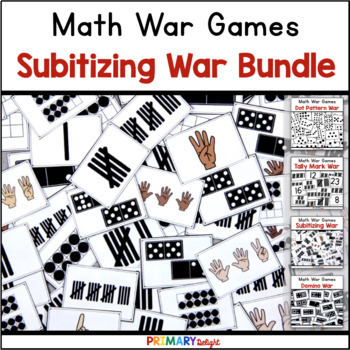Subitizing War Game and Number Sense War Games for Number Sense Activities
What educators are saying
Products in this Bundle (5)
Description
These subitizing games will help your students build number sense skills while playing a fun game. They will practice rapidly recognizing sets of domino dots, tally marks, finger patterns and ten frames as they play the game.
By purchasing this bundle, you will save 20% off the price of each individual game!
Subitizing War Games are a twist on the traditional card game "War." Instead of comparing numerals, players name the number of the domino dots, tally marks, finger patterns, or ten frames on their cards. The player with the largest number wins the hand! The game can be played with pairs or small groups of students.
Included in this bundle are the following four games:
These games are perfect for partner work, small groups, or math centers!
==========================================================
All new products are 50% off for 48 hours! Follow me on TPT (by clicking the green star above) or on Facebook to find out when new products are posted!





